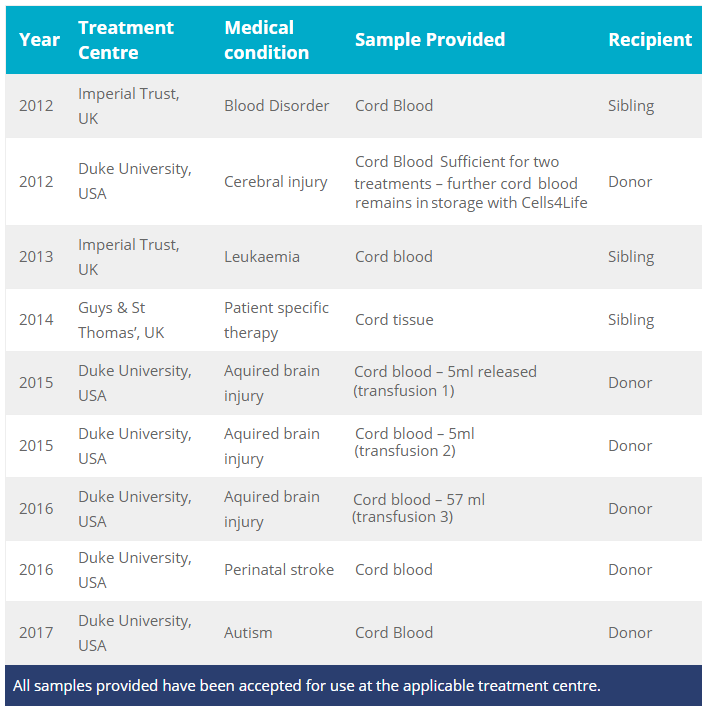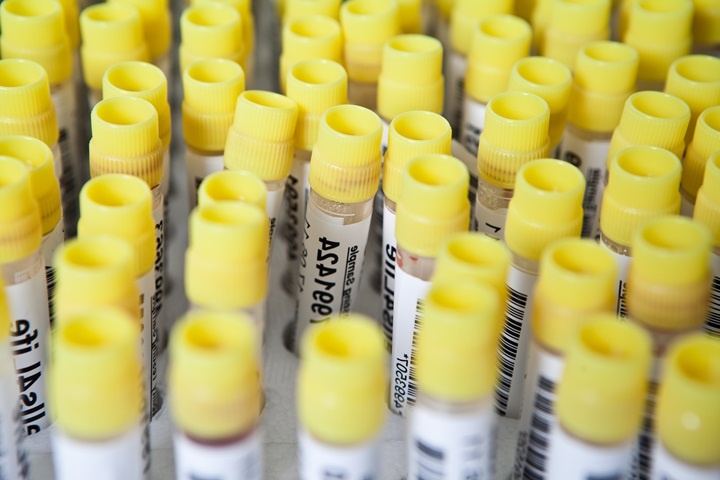
The number of transplants using cord blood stem cells has rapidly increased since the first transplant occurred in 1988. There have been more than 35,000 cord blood transplants worldwide and research into the potential uses for cord blood stem cells has made some incredible breakthroughs (Aldenhoven & Kurtzberg, 2015).
As the medical fraternity and general public learn more about the regenerative power of cord blood stem cells, the number of people saving their child’s cord blood sample has also increased. There are now more than 400,000 cord blood units stored worldwide and more than 100 cord blood companies in operation (Gluckman, 2009).
Cord Blood & Cord Tissue Transplants
Since 2012, Cells4Life have released cord blood samples and cord tissue for the treatment of various conditions:

Umbilical cord blood can be processed in different ways before being cryogenically frozen:
CellsPlus – powered by an advanced blood separation technology called TotiCyte where 99.3% of red blood cells are removed making the stem cells transplant ready. Learn more »
Whole Cord Blood – minimally manipulated cord blood sample is preserved, capturing all stem cells present within the cord blood including Haematological Stem Cells (HSC), Mesenchymal Stem Cells (MSCs), Very Small Embryonic-Like Stem Cells (VSELs) and more! Learn more »
Cells – sample is processed using a state-of-the-art volume-reduction technology that ensures almost 20% more HSCs are retained than any other similar processing method. Learn more »
While all current stem cell treatments use HSCs, researchers believe that many future treatments will use MSCs and VSELs. There are already more than 30 research projects currently underway which are determining how effective MSCs and VSELs are for treating illnesses including blindness, Alzheimer’s disease, spinal injuries, Parkinson’s disease, stroke, diabetes, breast cancer and lung cancer.
The stem cells in MSCs and VSELs are considered to be particularly valuable because they are multipotent. Multipotency means they are capable of transforming into many types of cells including chondrocytes (cartilage cells), osteoblasts (bone cells), myocytes (muscle cells) and adipocytes (fat cells). Their flexibility makes them attractive for researchers interested in regenerative medicine — a branch of medicine that seeks to find ways to regenerate human tissue and organs.
Cells4Life offers multiple sample subdivisions that allow parents to use just a part of the sample stored as needed and keep the remaining for future use.
Want to learn more about our cord blood storage services? Speak to one of our cord blood specialists now at +971 4 3116613 or visits our contacts page.
SOURCES:
Ccbb.duke.edu,. (2015). History of Cord Blood | Carolinas Cord Blood Bank (CCBB). Retrieved 17 July 2015, from www.ccbb.duke.edu/about-cord-blood/history-cord-blood
Gluckman, E. (2009). History of cord blood transplantation. Bone Marrow Transplantation, 44(10), 621-626. doi:10.1038/bmt.2009.280
Gluckman, E., & Rocha, V. (2005). History of the clinical use of umbilical cord blood
Aldenhoven, M. & Kurtzberg, J. (2015). Cord blood is the optimal graft source for the treatment of pediatric patients with lysosomal storage diseases: clinical outcomes and future directions. Cytotherapy, 17(6), 765-774. http://dx.doi.org/10.1016/j.jcyt.2015.03.609
{{cta(‘f7389741-26c1-44fd-b68c-b354e8c50c0e’)}}


